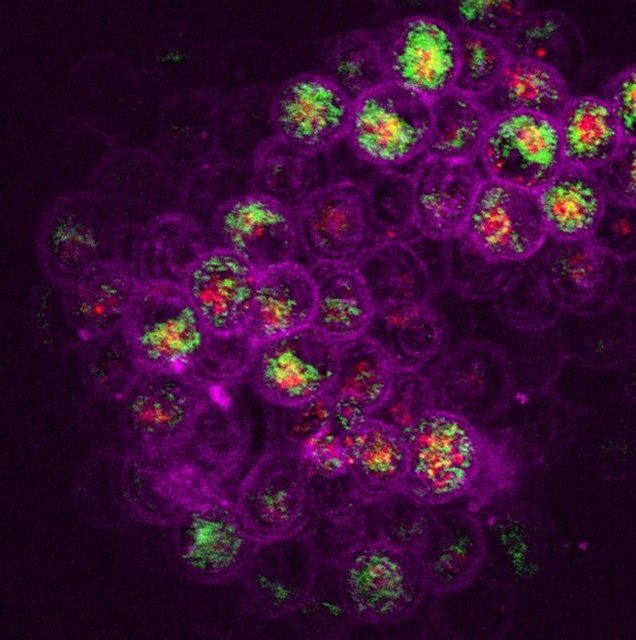Targeted hyperthermia
In this project, we exploit the enhanced optical absorption of metallic nanoparticles at their localised surface plasmon resonances in the context of nanomedicine.
Nanoparticles are designed to achieve maximum light-to-heat conversion and their surface is prepared to specifically target a region of interest. Once delivered, light matching their plasmon resonance is used to induce local heating and trigger biological responses, ultimately leading to cell death. This approach is applied in different contexts, including oncology and disinfection.

Motivation
All building blocks of life are highly temperature responsive: lipid layers can undergo phase transitions, proteins can unfold, DNA can melt, etc. In medicine, hyperthermia uses heat to treat or complement the treatment of a disease or pathology. In this context, enhanced optical absorption in plasmonic nanoparticles offers an attractive way to locally generate heat upon illumination in the NIR region of the spectrum, where biological tissues are more transparent. By delivering those nanoparticles to a desired region, one can use light to locally trigger a reaction of the biological environment, controlled by the induced temperature increase. This approach has already shown to be relevant in the context of oncology, to specifically induce cancer cells death, but owing to its transversality, it has the potential to be applied to many other contexts. In this project, we bring an interdisciplinary perspective to hyperthermia, which integrates our advanced know-how on heat control and monitoring with plasmonic nanoparticles with the biology of our collaborators.
Research focus
- Further understanding the biological mechanisms triggered by localized hyperthermia
- Designing new light-activated nanoparticles for biomedical applications
- Exploring new applications of targeted hyperthermia beyond oncology
Project members
Collaborators
- Clara Vilches (ICFO)
- Turgut Durduran (ICFO)
